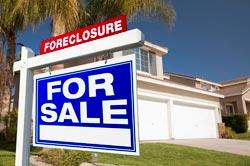South African estate agents view distressed properties as good bargain buys while some reckon these are bad for the real estate market recovery.

Figures in the first quarter showed that South African distressed sales represented 22 percent of total sales, up from 17 percent in the previous year, notes Seeff.
According to Samuel Seeff, chairman of Seeff Properties, the volume of distressed properties in the market and the lag in clearing these out is certainly a factor that is weighing down real estate recovery.
Distressed properties are those properties that are typically sold below market value due to sellers not being able to maintain servicing their bond repayments, he says.
The Royal Institution of Chartered Surveyors Global Distressed Property Monitor Q1 2011, released in June, shows that countries such as Ireland, Spain, the US and South Africa have seen the largest increase in distressed property listings in the first three months of this year.
Emerging market countries such as Brazil, Russia and China (three of the BRICS countries) seem set to drop from what already were modest figures, he explains.
“It is estimated that close to one third of South African property owners fall within the distressed property category.”
Figures in the first quarter showed that South African distressed sales represented 22 percent of total sales, up from 17 percent in the previous year, notes Seeff.
He points out that distressed properties generally sell for below market value thus weighing down property values.
Sellers in some cases may find themselves in a position where a distressed property has sold in proximity to their home, affecting how banks view the value of their property when assessing bond loans for potential buyers.
“This effectively results in a “parallel market” where property values are being driven down artificially.”
Seeff says as things stand, demand is sluggish on the back of growing food, fuel and utility price hikes and the looming interest rate hike.
“With foreclosures continuing its dominating force in real estate stock, we are unlikely to see any real market recovery until late next year.”
Hano Jacobs, chief executive officer of the Realty 1 International Property Group believes that distressed properties have offered many buyers the opportunity to enter the property market.
He says these properties that have come on to the market in the past two years have allowed first-time buyers and other buyers the chance to enter the property market and a chance to upgrade to better homes or areas at a discount.
“But such properties are not always well-presented as they are often somewhat shabby-looking and it can take a really keen eye to spot their potential,” says Jacobs.
He says owners who were having difficulty in making their home loan repayments will obviously not have had much if anything to spend on the upkeep of their properties.
It is therefore true that in repossessed properties, grime and clutter can hide a long-term absence of essential maintenance that may cost the buyer a lot to rectify.
Distressed properties are different. They are usually sold before the owners have got themselves too far into financial trouble, and most are certainly worth a second look to see if the “bones” of the home are sound, he says.
If you were looking to cash in on these distressed property bargains, Jacobs says buyers should look at three most important indicators that the property is a good buy.
These include good structure, if a property had bad cracks, roof leaks and rising damp, look away. Better still, he says, if you really like a home, make sure you get professional help to inspect it and assess damage before making an offer.
A good infrastructure such as electrical system, plumbing and gas installation is very important to check out. Ask the seller to produce an up-to-date safety compliance certificates for these.
Thirdly, he says well proportioned rooms and floor plan are essential when buying a home. He suggests that a buyer does his own measurements to get the real dimensions of the rooms so they know exactly what they are buying.
“If all these three elements are in place and the home is in a good location, the astute buyer will be quick to react especially if the price is well below current market value for the area as is the case with many distressed sales.”
He adds that the savings to be made when buying such a property will usually more than compensate for the cleaning, mending and repainting that are probably all that will be needed to turn it back into a real gem. – Denise Mhlanga
Readers' Comments Have a comment about this article? Email us now.
“According to Samuel Seeff, chairman of Seeff Properties, the volume of distressed properties in the market and the lag in clearing these out is certainly a factor that is weighing down real estate recovery.”
The real thing weighing down real estate recovery is greed: the banks refuse to lose any money regardless of the eventual long-term interest rate profits they would make ANYWAY, and the estate agents want to do high commission deals instead of doing more turnover and actually selling stuff that is a challenge. We need a Robert Kyosaki to stir the pot. - Jakes







